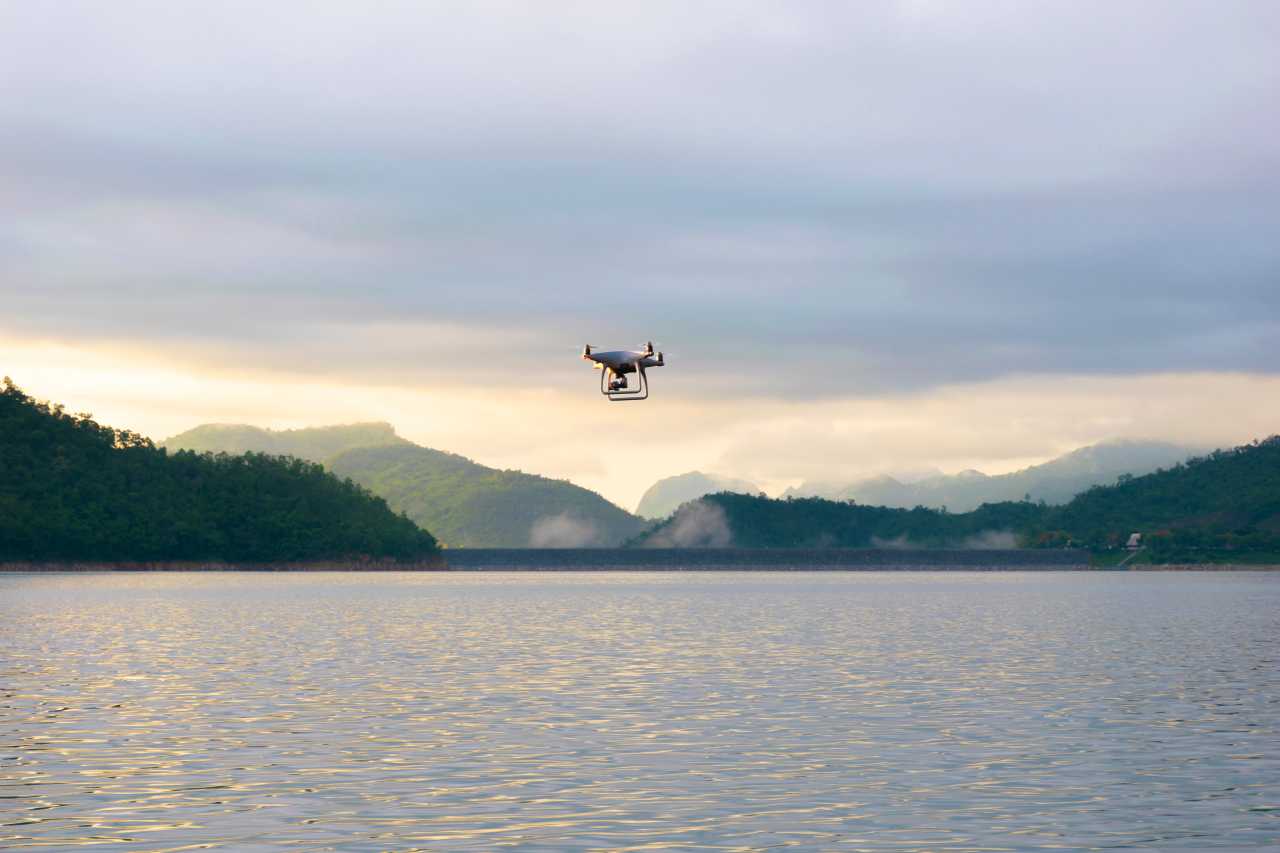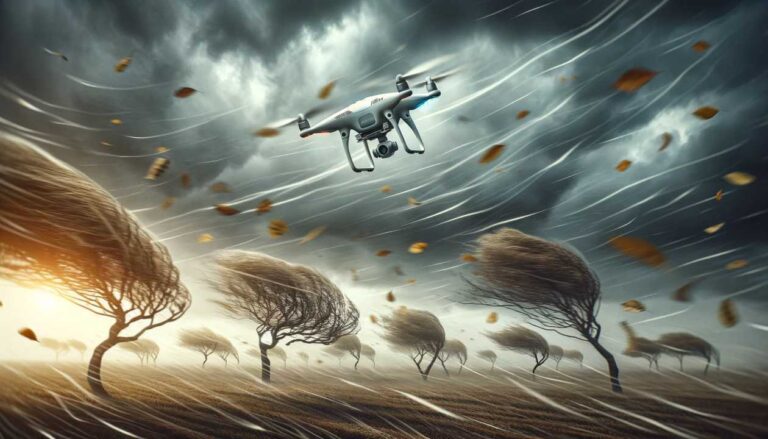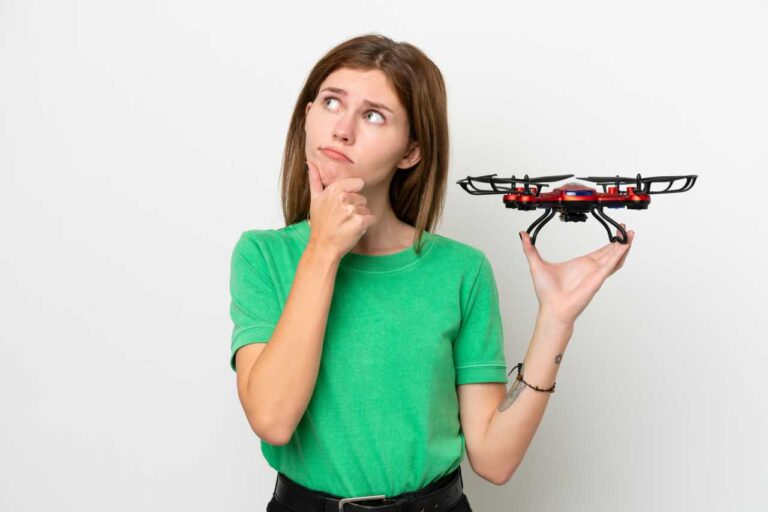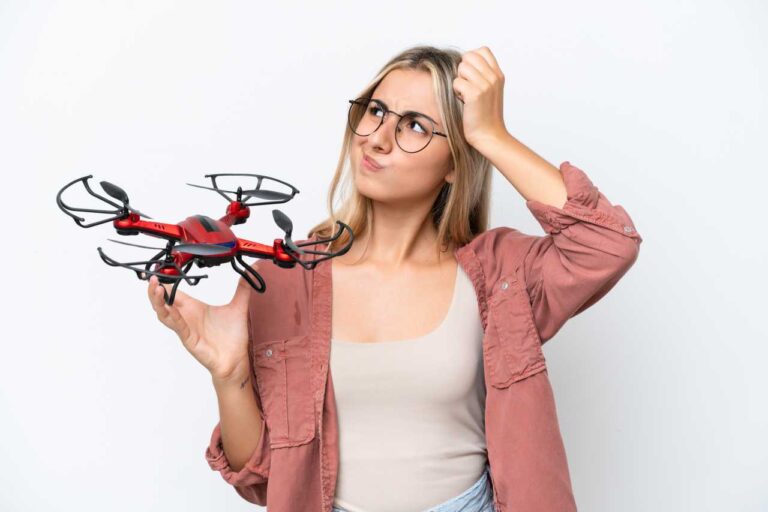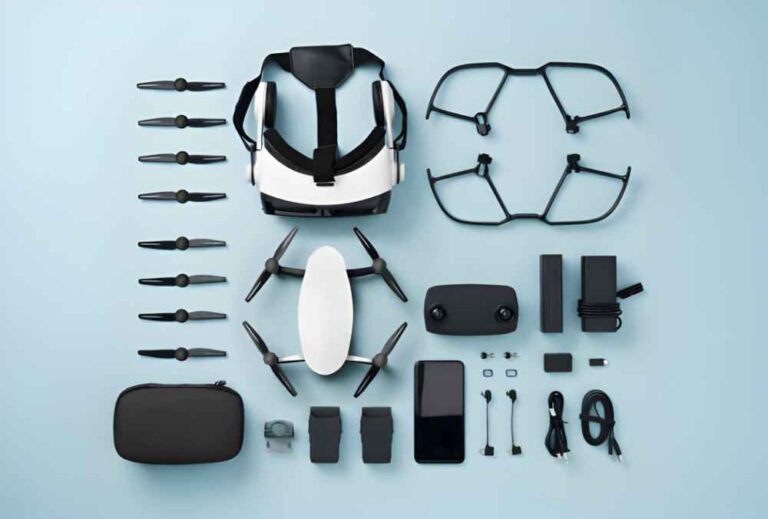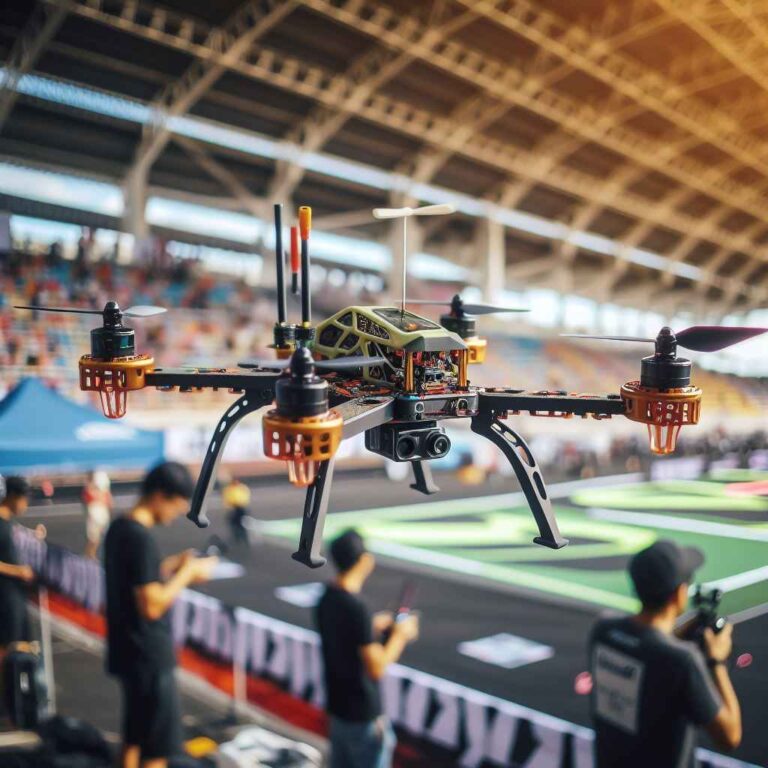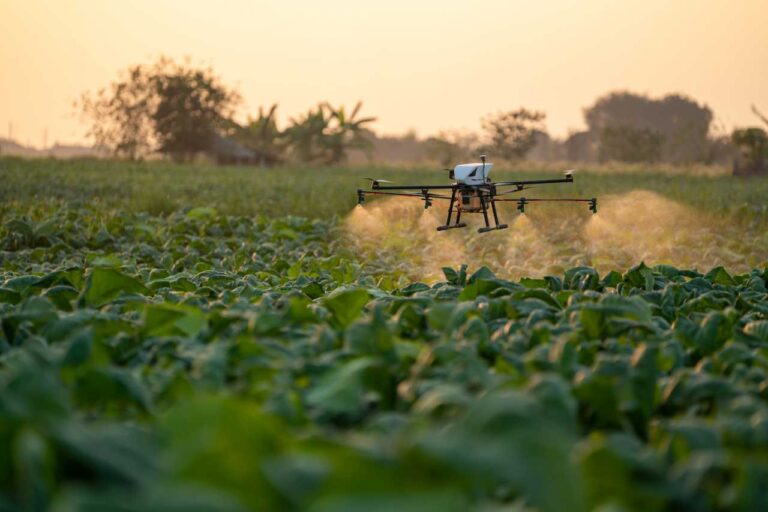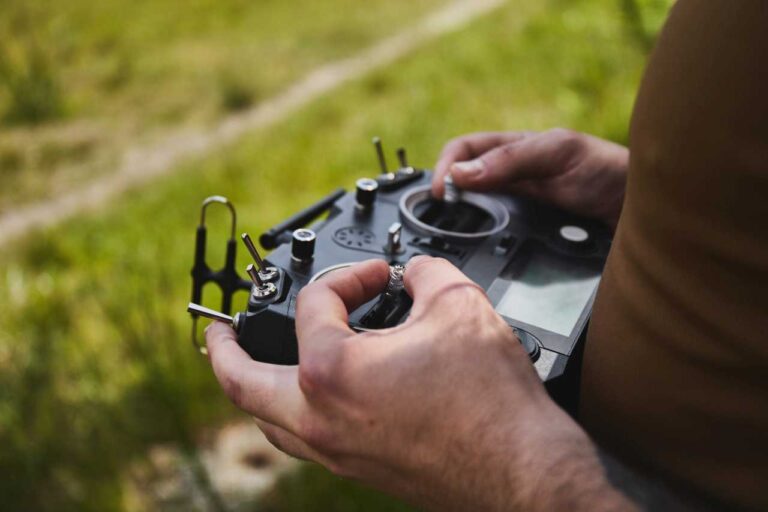In today’s technologically advanced era, drones have emerged as a fascinating topic of discussion. One question that often arises is How far Can Drones Fly from their command center? While the answer might seem straightforward, it’s intertwined with various nuances. Typically, many consumer drones boast a range of 1 to 5 miles. However, this distance is not set in stone and can fluctuate based on several determinants.
To begin with, the specific type of drone holds significant weight. Renowned brands like DJI have rolled out different types of drones, with models like the DJI Mavic 3 being commonly recognized for their impressive range, often overshadowing competitors. The drone spectrum also encompasses long-range quadcopters and standard models. The former, equipped with advanced command systems, can span vast distances, whereas the latter might be confined to a few meters or miles.
The efficiency of the controller and the clarity of signal transmission are paramount. A drone’s usable range is intrinsically linked to its line of sight with the controller. An unobstructed path ensures the drone can travel farther. However, barriers can curtail this range. The bond between the drone and its device becomes even more crucial, especially when pondering how far a drone can venture from its command center automatically. Consider a drone capable of covering 5 miles; if its battery only lasts 20 minutes, it would need to initiate its back home protocol prematurely.
Answering the Big Question: How Far Can a Drone Fly from Its Operator?

Drones have become a staple in various industries, from real estate photography to agriculture. But one question that often arises is: How far can a drone fly from its operator? The answer isn’t as straightforward as one might think.
The distance a drone can fly from its controller while maintaining a viable signal is termed as the drone’s range. Each drone model comes with an advertised flight range. While this gives a general idea, the actual range can vary based on real-life situations. For instance, a toy drone might have a range of about 20 to 100 yards. On the other hand, high-end consumer drones can boast a range of approximately 2.5 to 4.5 miles (4 – 8km). Mid-tier consumer drones typically have a range of about 0.25 to 1.5 miles (400m – 3km).
The specific range of a drone is influenced by the strength of the controller signal and the type of transmitting technology used. As expected, pricier drones tend to offer longer ranges. However, for most recreational purposes, reaching the limit of your controller signal might mean surpassing your visual line of sight, which is not recommended under regulations.
For example, the DJI Mavic Mini has a range of 4km with a flight time of 20 minutes, while the DJI Mavic 2 Pro can fly up to 10km for 31 minutes.
It’s essential to note that even if your drone can maintain contact with its controller at a distance of 4 miles, it’s doubtful you can still visually track it. The FAA guidelines for drone operation emphasize the importance of keeping the drone within visual line of sight for safety reasons. In an unobstructed view, you can clearly see your drone from about 1,500-2000 feet away, which is less than half a mile.
What Determines the Range of a Drone?

The flight range of drones varies widely, influenced by a myriad of factors. From the drone’s design to external conditions, let’s dissect what truly determines a drone’s range.
How Does the Drone Model Affect Flight Distance?
Different drone models come equipped with varied capabilities. For instance:
- DJI Drone Range vs. Other Brands: Brands like DJI are renowned for their extended flight ranges, often surpassing many competitors. The DJI Mavic 3, for instance, boasts a range that few can match.
- Long Range Quadcopter vs. Standard Models: Long-range quadcopters are designed for vast distances, often used in professional settings. In contrast, standard models, typically used by hobbyists, might have a more limited range.
How Does the Controller and Signal Transmission Play a Role?
The controller’s quality and its signal transmission capabilities are pivotal. A drone’s range is often tied to its line of sight with the controller:
- Line of Sight and Drone Control: In open terrains, a drone can achieve its maximum range. However, obstacles can significantly reduce this range.
- The Link Between Drone and Device: The quality of the connection between the drone and its controller is vital. A stronger link ensures the drone can fly farther from its operator without losing control.
Battery Capacity: How Long Do Drones Stay in the Air?
The drone’s battery capacity directly influences its flight time and, consequently, its range:
- Average Flight Time for Drones: While some drones can stay airborne for over 30 minutes, others might have a shorter flight time, limiting their range.
- How Far Can a DJI Drone Fly on a Single Charge? Brands like DJI have models that can fly for extended periods, allowing them to cover vast distances on a single charge.
In essence, a drone’s range is determined by its design, the controller’s quality, and external factors like battery life and environmental conditions.
Exploring Drone Ranges: From Hobby Drones to Military Drones

How Far Can Hobby Drones Travel?
Hobby drones, primarily designed for recreational use, typically have a limited range. Factors such as battery life, design, and communication technology influence this range. While some advanced consumer drones boast ranges up to 6 miles, legal and practical constraints often limit their flights. The FAA’s “line of sight” rule, for instance, mandates clear, unobstructed vision between the pilot and the drone, effectively limiting the range to about 3 miles under ideal conditions. Local laws and no-fly zones further restrict this range.
100 Meters to 2 Mile Range Drone: Common Distances for Recreational Use
Drones within this range are usually consumer drones used for aerial photography and recreational purposes. Their range is influenced by their design, battery life, and the technology used for communication between the drone and the controller.
What is the Range of Commercial Drones?
Commercial drones, especially those used in industries like agriculture, construction, and energy, often require longer ranges. For instance, the JOUAV CW-30E VTOL drone can travel up to 200 kilometers from its controller while maintaining real-time video transmission. The range of commercial drones is also influenced by their flight capabilities. Battery-powered models might only fly a few miles before needing a recharge, while gas engines can enable longer flights, sometimes spanning hundreds of miles.
Drones with 5 Mile Range and Beyond: Use Cases and Examples
Drones in this category are typically high-end consumer drones or commercial drones. For example, the DJI Mavic 3, a quadcopter designed for aerial photography and videography, offers a 15km control range. Such drones are equipped with advanced technologies, ensuring stable flight and high-quality imaging over long distances.
The Impressive Distance of Military Drones
Military drones stand out distinctly in the vast realm of aerial vehicles. Crafted meticulously for tasks like surveillance, reconnaissance, and even combat, these drones are the epitome of range, endurance, and stealth. While the maximum distance they can cover remains a closely guarded secret in many cases, it’s no mystery that certain military drones can traverse thousands of miles away from their launch points, remaining in the sky for extended periods.
The Zephyr Stratospheric UAV, for instance, is a marvel in drone technology. Developed with the latest frequency controls, it can stay aloft for over 25 days, making it a significant upgrade for many military operations. Another notable mention is the Global Observer Stratospheric Persistent UAS. With its advanced GPS and antenna extensions, it can loiter in the atmosphere for up to a week, offering unparalleled surveillance capabilities.
The Orion Unmanned Aircraft System (UAS), on the other hand, boasts an endurance of over 120 hours. Its ability to carry different types of payloads makes it a versatile choice for various missions. The MQ-1 Predator UAS is another game-changer. Equipped with state-of-the-art wifi systems and antenna extensions, it can deliver precision air-to-surface weapons, setting new standards in drone warfare.
For those looking to purchase or buy a drone with extended capabilities, the RQ-4 Global Hawk HALE UAS is an excellent option. It can soar at an altitude of 60,000ft and has a guideline endurance of over 32 hours. Its automatic return feature ensures it can come back to its base safely, even if there are issues during the mission.
However, with great power comes great responsibility. The transport and load of these drones mean they come with an extra cost. Additionally, their operations around buildings and dense areas require careful planning and strategy. As drone technology continues to advance, we can only anticipate even more impressive feats from these military giants in the future.
How Far Can a Military Drone Fly Compared to Commercial Models?
While commercial drones have made significant advancements in range, military drones still outpace them in terms of distance and endurance. The technology and budget backing military drones allow them to operate over vast distances, often beyond the capabilities of commercial models. For instance, while a commercial drone might cover hundreds of kilometers, military drones can span continents.
Factors That Affect How Far a Drone Can Fly
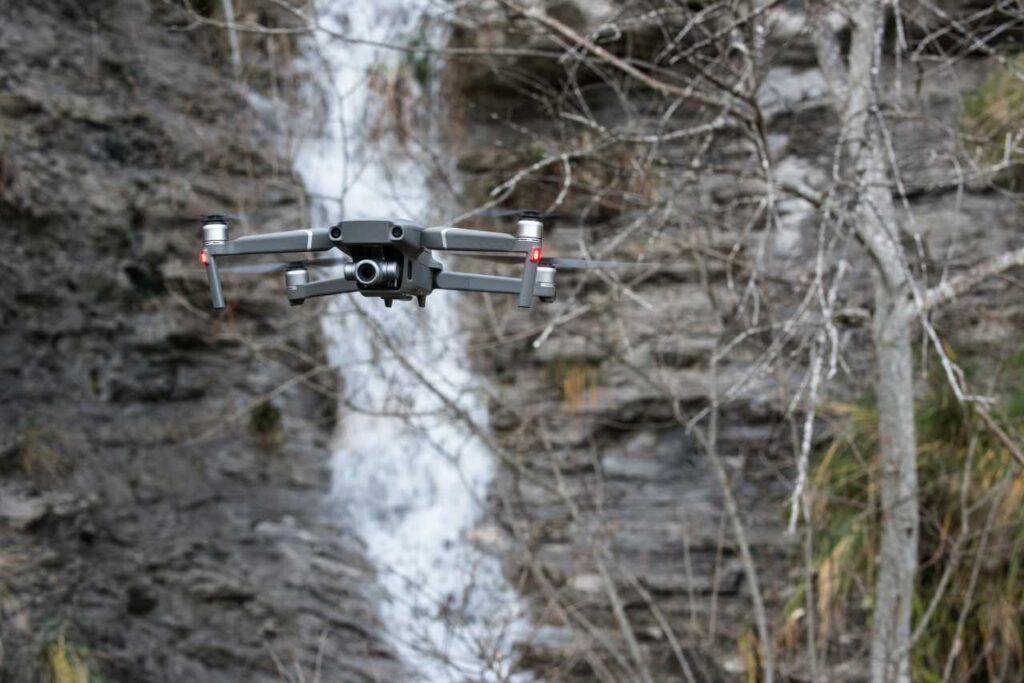
The flight range of drones is a topic of interest for many enthusiasts and professionals alike. While technological advancements have significantly improved drone capabilities, several factors still influence how far a drone can fly. Let’s delve into some of these determinants.
How Do Weather Conditions Impact Drone Distance?
Weather conditions play a pivotal role in determining a drone’s flight distance. Factors like wind speed, air density, and temperature can either enhance or hinder a drone’s performance.
Wind, Density, and Drone Flight Range Wind can be a double-edged sword for drones. While a tailwind can help a drone cover more distance by pushing it forward, a headwind can reduce its range by forcing it to use more battery power. Air density, which changes with altitude and weather conditions, affects the drone’s lift. On days with higher air density, drones can generate more lift, potentially increasing their range. Conversely, on hot days when the air is thin, drones might struggle to maintain their altitude and cover less distance.
Regulations and Guidelines: How Far Should You Fly a Drone?
While technical and environmental factors are essential, drone pilots must also be aware of the legal constraints that might affect their drone’s flight range.
FAA Guidelines on Drone Altitude and Distance In the U.S., the Federal Aviation Administration (FAA) has set specific guidelines for drone operations. Drones are typically restricted to a maximum altitude of 400 feet above ground level. Furthermore, they should not fly beyond the operator’s visual line of sight, ensuring the pilot has control over the drone at all times.
Staying Within Line of Sight: Is It Mandatory? Yes, maintaining a visual line of sight with the drone is mandatory in many countries, including the U.S. This regulation ensures that the operator can see and avoid other aircraft or obstacles, reducing the risk of accidents. Some advanced drones come with features that allow “first-person view” flying using cameras and goggles, but even in such cases, a visual observer must maintain direct eye contact with the drone.
While drones have the potential to cover vast distances, their range is influenced by a combination of environmental, technical, and regulatory factors. By understanding these aspects and adhering to guidelines, drone operators can ensure safe and efficient flights.
Frequently Asked Questions
Navigating the world of drones can be complex, especially with the rapid advancements in drone technology. Here are some frequently asked questions to provide clarity on common concerns and curiosities.
Which Drone Has the Longest Range in 2022:
The DJI Mavic 3 is among the top contenders when it comes to range. Understanding How Drones Work is crucial when appreciating the capabilities of the DJI Mavic 3. With a maximum flight distance of up to 15 kilometers, it stands out as one of the drones with the longest range available to consumers in 2022.
How High Up Can a Drone Fly?
While drones technically have the capability to fly at very high altitudes, regulations often limit their height. In the U.S., the Federal Aviation Administration restricts drones to a maximum altitude of 400 feet above ground level to ensure airspace safety.
How Far Can a Drone Camera See?
The visibility of a drone camera depends on the camera’s resolution and the drone’s altitude. High-end drones equipped with 4K or 6K cameras can capture clear images from significant distances. However, while the camera might be able to zoom in and capture distant objects, the clarity will depend on atmospheric conditions and camera quality.
How Does Interference Affect the Range of a Drone?
Interference, especially from electronic devices and structures, can significantly impact a drone’s range. Signal interference can lead to reduced control responsiveness or even loss of control. Pilots should always be cautious of flying in areas with high electromagnetic interference, such as near power lines or broadcasting towers.
By staying informed and understanding the intricacies of drone operation, enthusiasts can ensure a safer and more enjoyable flying experience.

